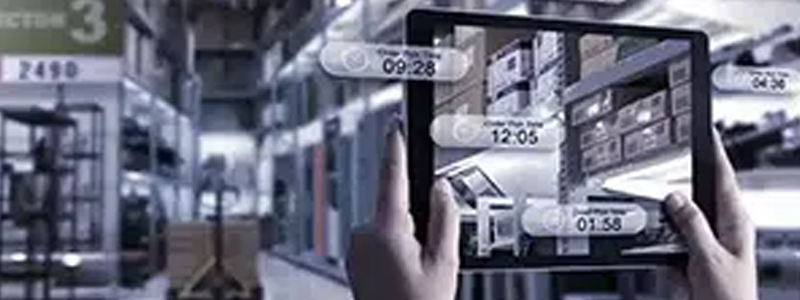Web Application, Software, and API Development & Customization
We Build Applications On Proven Frameworks & Everything Inbetween
Design – Architecture – Delivery – Development – QA/Testing – Deployment
Intertech Web Framework & API Consultants – 99.70% Referral Rating
Our Web Application, Software, & API Development Specialists Can Help You Determine Which Framework & Format Is Best For Your Business
Understanding Your Options Helps You Determine Your Requirements
2-Tier Framework
A traditional framework is considered a 2-tier architecture (client side and server side) and is like a box of tinker toys and the fastest way to develop software. It’s a piece of software that supports the development of the front end (client-side) and back end (server-side) application software, including web services, resources, and APIs, that run on the web. A web framework helps you with your code based on your task, simplifying the development process. This architecture and application framework have several advantages, including reliability and reduced errors, easier maintenance, and faster development. And often the deciding factor, and because of all these pre-developed pieces, it is a cheaper way to build. The disadvantage is that web frameworks are typically monolithic and have limitations when customization is required. A 2-tier architecture can also see a decrease in performance when many users rely on the application at the same time. These are important factors to be aware of when deciding on a direction.
3-Tier or Modular Architecture
The concept of modular architecture is not new, but the idea of simply breaking up a system into a few parts, or tiers and layers, can be overlooked with the hype of new trigger words, like microservices and API-Driven development. However, in all cases, understanding all the elements within your architecture is critical regardless of which format you select for your transformation. The key is to define where the monolith can be separated naturally. Of course, this is easier said than done, but doing so will be the first step no matter how far you take the modular architecture design unless you’re starting from scratch. If this direction is best for your company, identify natural breaks within the system that suit your purposes and lead to a good solution. You may be surprised that modifying your monolithic system into a few parts can make it look much smaller, more manageable, and more scalable, opening up development to smaller teams that are not so reliant on each other.
“Tier” vs. “Layer” — The terms “Tier” and “Layer” are often used interchangeably because they denote a physical separation within the software. However, there is an important difference. A “Layer” is a functional separation of code within the software, but layers are found within “Tiers.” For example, a 2-Tier architecture (or client-server architecture) is typically made up of one Tier holding the UI layer (known as the client-side/front end) and a second tier holding a business logic layer and a database layer (or server-side/back end). A “Tier,” although also a physical separation, contains one or more layers, like a Ukrainian nesting doll – the Tier is the outside container that holds all the “layers” together and allows for scalability in development.
Micro-Frontend Framework
In keeping with the modular design and development that has gripped development, micro-frontend is a front end development pattern that splits up the client-side applications into smaller units and helps with the routing of multiple front end applications. Similar to Microservices, and almost the same as 3-tier, it splits the applications up into sections (front end, back end, & Database) so multiple teams ( independently ) can work on different features and various aspects of the application at the same time, creating a more flexible, end-to-end, architecture.
API-Driven “Framework”
Another form of web framework development that has gained popularity is using an Application Programming Interface, or API, as the foundation of the architecture. It may not sound like it but an API-driven architecture is a framework of rules. Separating the front and back ends from the “framework” eliminates the dependencies between the two and allows you to connect and disconnect at will without impacting other areas. Still, there can be challenges that accompany the transition. For one, they are a complex entity that can require much extra work throughout your system when integrated. And when done incorrectly, they are the first place hackers look for an entry point. However, Agile/DevOps/CI/CD development can thrive by uncoupling the front and back. What are the benefits? No longer does one development team have to keep track of everything. Instead, smaller, more agile teams specializing in different technologies can be deployed. In addition, technologies that could not be used before can now be considered. Indeed, there are pros and cons to be aware of when moving to an API-Driven architecture from an existing monolith. For one, it is more expensive than the 2-tiered web framework model. However, when done correctly, the higher initial costs are offset by the benefits gained through flexibility and the ability to select technologies that may have a deeper pool of developers in a tight market.
Microservices & Containers “Framework”
Microservices is a type of framework but it is almost exactly the opposite of what you are likely looking for when talking about an easy build budget friendly web framework. In a microservices architecture, the microservices and containers work together (although, should not be considered the same). A container is a way to allocate resources, while a microservice is a software design pattern. Microservices are often referred to as the peak of modularity, and this may be the case. Still, microservices can also become so big and unwieldy that they create an issue in manageability and cost. For this reason, plan and document as you go along so this does not happen. Containers assist in solving this. The benefits are also similar to an API-Driven architecture – smaller teams can work on different services without impacting other areas of the enterprise. Microservices does exactly what it says, turning tasks into micro-sized loosely coupled services connected by lightweight protocols (a loosely used term often used with APIs as well). We won’t detail the elements of the process here but know that multiple technologies can be used, and we can help you assess and determine the best way forward or assist your team with experienced on-demand co-development.
What Is The Difference Between an API & Protocol?
For more detail on this link: “API vs. Protocol”
Where Should You Start?

Assess Your Monolith With Great Detail – Tech to Business
Do a detailed assessment of your architecture and consider all aspects of the business.
The first thing to do is have someone in your organization who can candidly detail your current architecture and define a way forward that fits your business. The assessment should consider all aspects of your IT structure, technology, and enterprise expectations, including a roadmap for short-term adjustments and long-term goals. It should also outline current resources, required resources to succeed, and areas needing temporary injections of expertise. Breaking apart a monolith is a big step and requires detailed planning, but in the end, it affords a structure that can react to requests and changes much more quickly.
Monolithic to Modular - What's Best For Your Company
Once your detailed assessment is complete, your migration begins from a monolithic system to a lighter-weight collection of autonomous services.
As the modules are identified and the decoupling process begins, we help you decompose applications by business capabilities, subdomains, technology & services. During this time, consider refactoring outdated applications or services that do not have natural separation points but should be separated into more agile modules. This is also an excellent time to consider your workflows and eliminate manual processes with updated process automation and intelligent data collection.
Web Development Framework (WDF) and API Development Consulting
There Are Many Proven Web Development Frameworks That Will Work For You
Selecting the correct framework for your needs comes down to what you want it to do and what technology will work best for your company and the company resources available to support it. Consider the following proven options, but make sure to assess your entire system and get an experienced opinion on your technology selection so you don’t begin by creating something that may already be out of date or dfails to meet your expectations.
We can provide an outside perspective when working with these technologies!
Web Frameworks — .NET Frameworks & .NET-Friendly Options (CMS)
.NET is a framework developed by Microsoft for building a wide range of applications, including web applications. It provides various tools and libraries for creating dynamic and robust web experiences. Below are listed some .NET and .NET-friendly web development frameworks & Content Management Systems (CMS) that work with .NET:
ASP.NET Web Forms: A traditional web framework that uses event-driven programming and controls to build web applications. It’s known for its ease of use and RAD (Rapid Application Development) capabilities.
ASP.NET MVC (Model-View-Controller): A framework that promotes separation of concerns and modular development by structuring applications into models, views, and controllers.
ASP.NET Core: A cross-platform, open-source framework for building modern, high-performance web applications. It includes ASP.NET Core MVC for building web APIs and web applications.
Blazor: A framework for building interactive web applications using C# and .NET. It allows you to create web applications with both client-side and server-side rendering.
Razor Pages: An alternative to MVC in ASP.NET Core, Razor Pages allows developers to build simple, page-focused web applications with minimal ceremony.
Nancy: A lightweight, open-source framework inspired by Sinatra, designed for building lightweight and fast web applications using C#.
Orchard Core: An open-source, modular CMS (Content Management System) framework built on ASP.NET Core, allowing developers to create customizable and extensible content-driven websites.
ServiceStack: A high-performance, full-featured web framework for building APIs and web services using .NET. It offers a wide range of features for building modern APIs.
Umbraco: A popular open-source CMS built on the .NET platform, known for its flexibility, extensibility, and user-friendly interface.
Sitefinity: A powerful CMS that offers a suite of tools for web content management, digital marketing, and personalization. It’s built on the .NET framework.
DotVVM: A framework that simplifies building complex web applications with a focus on maintaining a clean separation between UI and business logic.
MVC5 and Web API 2: These are versions of the ASP.NET framework for building web applications and APIs before ASP.NET Core was introduced.
These frameworks provide developers with tools, libraries, and patterns to create a wide range of web applications using the .NET platform. The choice of framework often depends on factors such as the project requirements, technology stack preferences, and development team expertise. Let us know if you would like an outside opinion and the addition of a trusted onshore resource on your project team.
Web Frameworks — Java & Java Friendly
Java has a rich ecosystem of web development frameworks that cater to different needs, whether it’s building traditional web applications, APIs, or more modern and reactive applications. Listed below are some Java and Java-friendly web development frameworks.
Spring Framework: One of the most widely used Java frameworks, Spring offers several modules for building web applications, including Spring MVC for traditional web apps and Spring WebFlux for reactive applications.
Spring Boot: A part of the Spring ecosystem, Spring Boot simplifies the setup and development of Java applications, including web applications, by providing opinionated defaults and embedded servers.
JavaServer Faces (JSF): A component-based Java web framework that simplifies building user interfaces by allowing developers to define reusable UI components.
Struts: An open-source framework that implements the Model-View-Controller (MVC) pattern for building web applications. Struts 2 is the modern version of this framework.
Play Framework: A reactive web application framework for Java and Scala that focuses on developer productivity, offering real-time capabilities and reactive patterns.
Vaadin: A Java framework for building modern web applications with a focus on user interfaces. It allows you to create rich, interactive UIs using Java code.
Grails: A Groovy-based web application framework that leverages the Spring Boot infrastructure. It promotes convention over configuration and rapid development.
Spark: A micro-framework for building web applications in Java. It’s lightweight and suited for simple web services and APIs.
Vert.x: A reactive toolkit for building applications on the Java Virtual Machine (JVM). It’s designed for event-driven and non-blocking applications.
Dropwizard: A framework for building RESTful web services with a focus on simplicity and rapid development. It provides a set of integrated components.
Strapi: Although it’s primarily JavaScript-based, Strapi is an open-source headless CMS that can be used with a Java backend. It provides APIs to manage content and comes with an admin interface.
Micronaut: A modern, JVM-based framework designed for building microservices and serverless applications. It’s optimized for low memory usage and fast startup times.
GWT (Google Web Toolkit): A framework for building rich web applications in Java and compiling them to optimized JavaScript code.
JHipster: A development platform that generates a Java-based backend with Spring Boot and a front-end with Angular, React, or Vue, offering a full-stack solution.
These frameworks cater to different architectural styles, development philosophies, and use cases. Depending on your project’s requirements, we can help you choose the most suitable Java framework to build your web applications.
Front End Web Development Frameworks
There are multiple front end Front-end web development frameworks that provide tools, libraries, and patterns for building dynamic and interactive user interfaces. Here’s a list of popular optional & popular front end web development frameworks.
React: A JavaScript library for building user interfaces, known for its component-based architecture and efficient rendering.
Angular: A full-featured front-end framework by Google, offering a complete ecosystem for building dynamic applications.
Vue.js: A progressive JavaScript framework that’s easy to integrate into existing projects and is known for its simplicity.
Svelte: A relatively new framework that compiles components into highly efficient vanilla JavaScript at build time.
Ember.js: A framework that focuses on convention over configuration and offers a set of tools for building ambitious web applications.
Preact: A fast and lightweight alternative to React, designed for performance optimization in modern browsers.
Mithril: A minimalistic JavaScript framework for building single-page applications, known for its small size and simple API.
Backbone.js: A lightweight framework that provides structure to web applications by offering models, views, and collections.
Stencil: A compiler that generates standard-compliant web components and can be used to build web applications or component libraries.
Marko: A UI library that focuses on performance by minimizing runtime overhead and optimizing updates.
Inferno: A React-like library that aims for maximum performance by prioritizing updates and rendering speed.
Aurelia: A framework designed for simplicity and extensibility, with a focus on clean code and flexible architecture.
RxJS: A library for reactive programming that allows you to work with asynchronous data streams and events.
Alpine.js: A minimal JavaScript framework for building interactive web interfaces directly in your HTML markup.
Nuxt.js: A framework built on top of Vue.js that simplifies server-side rendering and Vue app development.
Gatsby: A React-based framework for building static websites with performance optimizations and data fetching capabilities.
Next.js: A React framework that enables server-side rendering and other advanced features to build dynamic web applications.
Quasar: A Vue.js framework that offers a set of high-quality UI components and tools for building responsive web applications.
These front-end web development frameworks provide various levels of complexity and features, catering to different project needs and developer preferences. Let us know if you would like to add one of our experienced consultants to your team.
Back End Web Development Frameworks
There are many proven back end web development frameworks that provide tools, libraries, and patterns for building server-side logic, APIs, and database interactions for web applications. Below is a list of some popular back end web development framework options.
Ruby on Rails (Rails): A framework for building web applications using the Ruby programming language, known for its convention-over-configuration approach.
Django: A high-level Python web framework that encourages rapid development and clean, pragmatic design.
Express.js: A minimal and flexible Node.js web application framework that focuses on creating server-side applications and APIs.
Spring Boot: A Java framework that simplifies the setup and development of web applications by providing opinionated defaults and embedded servers.
Flask: A lightweight Python framework for building web applications and APIs, providing the essentials without imposing too many constraints.
Laravel: A PHP web application framework that emphasizes developer-friendly syntax and a wide range of features.
ASP.NET Core: A cross-platform, open-source framework for building modern web applications and APIs using C#.
NestJS: A Node.js framework that provides a modular structure for building scalable and maintainable back-end applications.
AdonisJS: A Node.js framework that follows the conventions of Laravel and aims to make building web applications in Node.js more structured.
Phoenix: A framework for building web applications using the Elixir programming language, known for its speed and real-time capabilities.
Ktor: A Kotlin-based framework for building asynchronous server-side and client-side applications.
Micronaut: A modern, JVM-based framework designed for building microservices and serverless applications.
Golang (Go) with Gin or Echo: While not exactly a “framework,” Go is a programming language that can be used to build high-performance web applications. Frameworks like Gin and Echo provide useful tools and utilities for building APIs and web services in Go.
Symfony: A PHP framework that offers a wide range of components and tools for building web applications and APIs.
Play Framework: While also used for front-end development, Play Framework offers powerful tools for building reactive web applications on the back end.
Slim: A lightweight PHP framework for building simple yet powerful web applications and APIs.
These back end web development frameworks provide various levels of abstraction, features, and architecture patterns to facilitate the creation of robust and efficient server-side components for web applications. The choice of framework often depends on the programming language you’re comfortable with, project requirements, and development team expertise. Let us know if we can help.
API (Application Programming Interface) Development Technologies
API (Application Programming Interface) development technologies enable developers to create interfaces for applications to communicate with each other. These technologies allow for the exchange of data and functionality between different software systems and provide an optional framework for your system. Below is a list of someAPI development technologies and tool you may consider.
REST (Representational State Transfer): A widely used architectural style for designing networked applications. REST APIs use HTTP methods and data representations like JSON or XML to communicate between clients and servers.
GraphQL: An API query language and runtime for executing those queries, developed by Facebook. GraphQL enables clients to request exactly the data they need, reducing over-fetching and under-fetching of data.
SOAP (Simple Object Access Protocol): A protocol for exchanging structured information using XML. SOAP APIs define a set of rules for structuring messages and are often used in enterprise environments.
OpenAPI (formerly Swagger): A specification for building and documenting RESTful APIs. It allows developers to define the API structure, endpoints, and data models in a machine-readable format.
API Gateways: These are intermediary components that manage and secure incoming API requests, handle routing, rate limiting, authentication, and other related tasks. Examples include Kong, Apigee, and AWS API Gateway.
API Management Platforms: Tools that provide comprehensive management, documentation, testing, and analytics for APIs. Examples include Apigee, Azure API Management, and Postman.
Serverless Frameworks: Serverless frameworks like AWS Lambda, Azure Functions, and Google Cloud Functions enable you to create serverless APIs that automatically scale based on demand.
LoopBack: A Node.js framework for building APIs with a focus on creating robust and dynamic RESTful endpoints.
Express.js: While commonly used for building web applications, Express.js can also be used to create RESTful APIs due to its flexibility and routing capabilities.< Flask-RESTful: An extension of the Flask framework for building RESTful APIs in Python.
JSON Server: A quick way to set up a RESTful API using a JSON file as the data source. It’s often used for prototyping and development.
Jersey: A Java framework for building RESTful APIs based on the JAX-RS (Java API for RESTful Web Services) specification.
LoopBack: A Node.js framework for building APIs with a focus on creating robust and dynamic RESTful endpoints.
Postman: While primarily used as an API testing tool, Postman also offers features for designing, documenting, and mocking APIs.
Swagger UI: A tool that generates interactive documentation for APIs based on OpenAPI specifications.
RamL: A YAML-based language for designing RESTful APIs and generating API documentation.
GraphiQL: An interactive development environment for testing GraphQL APIs.
These technologies and tools cater to different use cases, architecture preferences, and requirements for creating and managing APIs. The choice of technology depends on factors like the nature of your application, the programming languages you’re comfortable with, and the features you need to implement in your API. Let us know if our experienced consultants can help you stay on schedule and budget.
Technical Expertise
We Help You Make Sense Of These Business Technologies
Consider the addition of one of our senior custom software development and design staff or a customized combination of our scalable consultants to help you and your team stay up-to-date, on schedule, and strengthened with the field-proven experience every project needs to succeed.
We provide an outside perspective and proven expertise in these technology areas!
Design – Architecture – Development – Testing – Delivery – Deployment
.NET | .NET Core | Microsoft Technologies
Intertech experts can help you and your team successfully work with a wide range of .NET and associated technologies to design and develop systems and applications that improve your business processes, whether your team is made up of all in-house talent or a hybrid of in-house and on and offshore contractors.
Core .NET Technologies:
.NET Framework: The traditional full-fledged .NET framework is designed primarily for Windows desktop and server-side applications.
.NET Core: A modular and cross-platform version of .NET designed for building modern, cloud-based, and cross-platform applications.
ASP.NET: A web framework for building web applications using .NET. It includes ASP.NET Web Forms, ASP.NET MVC, and ASP.NET Web API.
ASP.NET Core: The cross-platform version of ASP.NET, optimized for modern web development.
Entity Framework: A popular Object-Relational Mapping (ORM) framework that simplifies database access in .NET applications.
Xamarin: A framework for building cross-platform mobile applications for iOS, Android, and Windows using .NET.
Blazor: A framework for building interactive web applications using C# and .NET instead of JavaScript.
WPF (Windows Presentation Foundation): A technology for building Windows desktop applications with rich user interfaces.
WinForms (Windows Forms): Another technology for building Windows desktop applications with a more traditional UI.
ML.NET: A machine learning framework for building custom machine learning models in .NET applications.
SignalR: A real-time communication library for enabling real-time functionality in web applications.
NOTE: “Windows Communication Framework (WCF) may be deprecated in .NET 5/6+, but it doesn’t mean your applications are going to be left out in the cold. Just like Web Forms and other .NET Framework technologies, your WCF applications will continue to work for a long time. In fact, WCF will likely work for the next two decades thanks to .NET Framework being considered part of the Windows operating system. – Q&A Microsoft” — At Intertech, we still support the following and specialize in seamless modernization development as required.
Windows Communication Foundation (WCF): A technology for building service-oriented applications and services.
Windows Workflow Foundation (WF): A framework for building workflow-enabled applications.
Windows Identity Foundation (WIF): A framework for building identity-aware applications using claims-based identity.
Windows Services: A mechanism for building long-running background services on Windows.
Other Technologies That Work with .NET:
Azure: Microsoft’s cloud computing platform that works seamlessly with .NET applications.
SQL Server: Microsoft’s relational database management system widely used with .NET applications.
Azure DevOps: A suite of development tools for planning, tracking, and deploying .NET projects.
Entity Framework Core: The cross-platform version of Entity Framework for database access in ASP.NET Core applications.
IdentityServer: An open-source authentication and authorization server compatible with .NET applications.
Angular: A popular front-end framework that can be used alongside ASP.NET to build dynamic web applications.
React: Another front-end framework that can be integrated with ASP.NET for building modern web applications.
Vue.js: A progressive JavaScript framework that can work with .NET in web development.
Redis: An in-memory data structure store that can be used for caching in .NET applications.
RabbitMQ: A message broker used for implementing messaging patterns in .NET applications.
Elasticsearch: A distributed search engine that can be integrated with .NET applications for advanced search capabilities.
Apache Kafka: A distributed streaming platform that can be used for real-time event processing in .NET applications.
Because the .NET ecosystem is continuously evolving, our senior consultants stay up-to-date with the newest changes while evaluating and identifying where and when to consider these changes, providing an invaluable tool when updating your system or pivoting to a new technology.

Java | Java Frameworks
Intertech experts can help you and your team successfully work with Java and the wide range of associated technologies to design and develop systems and applications that improve your business processes, whether your team is made up of all in-house talent or a hybrid of in-house and on and offshore contractors.
Core Java Technologies:
Java Standard Edition (Java SE): The core Java platform that provides the essential libraries, APIs, and tools for developing Java applications.
Java Enterprise Edition (Java EE): A set of specifications and APIs for building enterprise-level Java applications, including web applications, services, and more.
Java Development Kit (JDK): The software development kit that includes the tools needed for Java development, such as the Java compiler (javac) and the Java Virtual Machine (JVM).
Java Runtime Environment (JRE): The runtime environment that enables Java applications to run on a user’s machine.
Java Virtual Machine (JVM): The virtual machine that executes Java bytecode and provides platform independence.
JavaFX: A framework for building rich client applications with a modern UI in Java.
Java Servlet: A technology for developing web applications using Java on the server side.
JavaServer Pages (JSP): A technology for creating dynamic web content using Java.
JavaBeans: A component architecture for creating reusable Java components.
Enterprise JavaBeans (EJB): A component model for developing distributed enterprise applications in Java.
Java Message Service (JMS): A messaging API for sending and receiving messages between distributed systems.
Java Database Connectivity (JDBC): An API for connecting Java applications to relational databases.
Other Technologies That Work with Java:
Spring Framework: An open-source framework for building enterprise Java applications, including Spring Boot for creating stand-alone applications.
Hibernate: An Object-Relational Mapping (ORM) framework for database access in Java applications.
Apache Struts: A web application framework for building Java web applications.
JavaServer Faces (JSF): A framework for building user interfaces for Java web applications.
Apache Maven: A build automation tool for managing Java projects and dependencies.
Apache Tomcat: An open-source web server and servlet container for running Java web applications.
JUnit: A popular testing framework for Java applications.
Log4j: A logging framework for Java applications.
Apache Kafka: A distributed streaming platform that can be used with Java for real-time event processing.
Elasticsearch: A distributed search engine that can be integrated with Java applications for advanced search capabilities.
Apache Hadoop: A framework for distributed storage and processing large datasets, often used in big data applications.
Docker: A containerization platform that allows Java applications to run in isolated containers.
Front-End Technologies That Work with Java:
NOTE: Front-end technologies typically work independently of the back-end programming language. In the case of Java, various front-end technologies can be used to create dynamic and interactive user interfaces. Some of the most popular front-end technologies that work well with Java on the back end include:
Angular: Developed by Google, Angular is a robust front-end framework for building dynamic SPAs (Single Page Applications). It can work with Java back ends through RESTful APIs.
React: Developed by Facebook, React is a popular JavaScript library for building user interfaces. It can be used alongside Java back ends through RESTful APIs.
Vue.js:A progressive JavaScript framework for building user interfaces. Vue.js can work with Java back ends similarly to Angular and React.
jQuery: A lightweight JavaScript library that simplifies DOM manipulation and event handling. It can be used in conjunction with Java back ends to enhance web applications.
Bootstrap: A popular CSS framework that provides a set of pre-styled components and responsive layout options. It can be integrated with Java-based web applications to achieve a consistent and visually appealing design.
HTML5 and CSS3: While not frameworks or libraries, HTML5 and CSS3 are essential technologies for building web interfaces. Java back ends can generate dynamic HTML content, then styled using CSS.
Ember.js: An opinionated JavaScript framework for creating ambitious web applications. It can work with Java back ends through APIs.
Polymer: A JavaScript library for building reusable web components. It can be used with Java back ends to create modular and flexible user interfaces.
Thymeleaf: A server-side Java templating engine that seamlessly integrates Java code with HTML templates. It is commonly used with Java frameworks like Spring to generate dynamic web pages.
Consider an experienced outside perspective from our co-development experts when starting your next project.
Front End (Client-Side)
Intertech experts can help you and your team successfully select and work with a wide range of front end technologies to design and develop systems and applications that improve your business processes, whether your team is made up of all in-house talent or a hybrid of in-house and on and offshore contractors.
Generally Accepted and Trusted Front End Technologies
HTML5, CSS3, and JavaScript: The foundation of web development, these three core technologies are essential for building static and dynamic web pages.
React: Developed by Facebook, React is a popular JavaScript library for building user interfaces. It is widely used for creating dynamic and interactive front-end applications.
Angular: Developed by Google, Angular is a powerful front-end framework for building Single Page Applications (SPAs) and dynamic web applications.
Vue.js: A progressive JavaScript framework, Vue.js is known for its ease of integration and flexibility, making it a popular choice among developers.
jQuery: A lightweight JavaScript library, jQuery simplifies DOM manipulation and event handling, and it is still widely used despite the rise of modern frameworks.
Bootstrap: A CSS framework, Bootstrap provides a set of pre-styled components and responsive layout options, making it popular for quickly creating visually appealing designs.
Sass (Syntactically Awesome Style Sheets): A CSS preprocessor that enhances the capabilities of CSS, making it easier to manage and maintain stylesheets.
Webpack: A popular module bundler that helps manage and bundle front-end assets such as JavaScript, CSS, and images for production deployment.
Gulp and Grunt: Task runners that automate repetitive tasks in the front-end development workflow, such as minification, compilation, and optimization.
Babel: A JavaScript compiler that allows developers to write modern ES6+ code and transpile it into backward-compatible versions for browser support.
TypeScript: A superset of JavaScript that adds static typing, enhancing code quality and maintainability in large-scale applications.
Ember.js: An opinionated JavaScript framework for building ambitious web applications with convention over configuration.
Front-end technologies that work well with the .NET| .NET Core family of technologies:
React: React is a popular JavaScript library for building user interfaces. It works well with both .NET and .NET Core through various integration options, such as using React templates in ASP.NET Core or creating React applications separately and communicating with the back end through APIs.
Angular: Angular is a comprehensive front-end framework developed by Google. It can be easily integrated with both ASP.NET and ASP.NET Core projects to build robust and scalable web applications.
Vue.js: Vue.js is a progressive JavaScript framework that works well with .NET and .NET Core projects through simple script integration. It provides flexibility and ease of use for building modern user interfaces.
Blazor: Blazor is a front-end web framework developed by Microsoft that allows developers to build interactive web applications using C# and Razor syntax. Blazor applications can run on both .NET and .NET Core platforms, enabling full-stack development using C#.
jQuery: jQuery is a lightweight JavaScript library that simplifies DOM manipulation and event handling. It can be used with both .NET and .NET Core projects to enhance interactivity and user experience.
Bootstrap: Bootstrap is a popular CSS framework that provides a set of pre-styled components and responsive design. It can be easily integrated with both ASP.NET and ASP.NET Core projects to achieve a consistent and visually appealing user interface.
TypeScript: TypeScript is a superset of JavaScript that adds static typing and other features for enhanced code quality. It works well with both .NET and .NET Core projects and can be used to write more robust front-end code.
Webpack: Webpack is a module bundler that can be used with both .NET and .NET Core projects to manage front-end assets, such as JavaScript, CSS, and images, and bundle them for production deployment.
Gulp and Grunt: Task runners like Gulp and Grunt can automate repetitive tasks in front-end development workflows and work well with both .NET and .NET Core projects for streamlining development processes.
Front end technologies that work well with Java
Angular: Angular is a powerful front-end framework developed by Google. It works well with Java on the back end, allowing developers to build robust and scalable web applications.
React: React is a popular JavaScript library for building user interfaces. It can be used with Java back-end applications to create dynamic and responsive front-end experiences.
Vue.js: Vue.js is a progressive JavaScript framework known for its simplicity and ease of integration. It can work effectively with Java-based back ends for building modern user interfaces.
Thymeleaf: Thymeleaf is a server-side Java templating engine that simplifies the process of rendering dynamic HTML templates. It works well with Java back ends to generate dynamic web pages.
jQuery: jQuery is a lightweight JavaScript library that simplifies DOM manipulation and event handling. It can be used with Java-based applications to enhance front-end interactivity.
Bootstrap: Bootstrap is a popular CSS framework that provides a set of pre-styled components and responsive design. It can be easily integrated with Java-based projects to achieve a consistent and visually appealing user interface.
GWT (Google Web Toolkit): GWT is a development toolkit that allows developers to write client-side code in Java and then compile it into optimized JavaScript. It provides a Java-based approach to front-end development.
Ember.js: Ember.js is an opinionated JavaScript framework for building ambitious web applications. It can be integrated with Java back ends to create scalable and data-driven front-end applications.
Polymer: Polymer is a JavaScript library for building web components. It can be used alongside Java-based back ends to create reusable and encapsulated front-end components.
D3.js: D3.js is a powerful JavaScript library for creating data visualizations using HTML, SVG, and CSS. It can be used with Java to display and interact with data on the front end.
Front end technologies that work with .NET and Java when you need to consider both.
NOTE: Several proven front-end technologies can also work independently, with .NET and Java on the back end. As you can see from their appearances above, these technologies are widely used and have established themselves as reliable choices for building dynamic and interactive user interfaces in many situations.
HTML5, CSS3, and JavaScript: The foundation of web development, these three technologies work on their own to create static web pages and can be integrated with both .NET and Java back ends to build dynamic and interactive web applications.
Angular: Developed by Google, Angular is a powerful front-end framework that can work independently, with .NET (via ASP.NET), and with Java (via Spring).
React: Developed by Facebook, React is a popular JavaScript library that can work on its own, with .NET (via ASP.NET Core), and with Java (via various frameworks and libraries).
Vue.js: A progressive JavaScript framework, Vue.js can function independently with .NET (via ASP.NET Core) and with Java (through RESTful APIs).
jQuery: A lightweight JavaScript library, jQuery can work independently and be integrated with .NET and Java to simplify DOM manipulation and event handling.
Bootstrap: A CSS framework, Bootstrap can work on its own and can be used with .NET and Java to achieve a consistent and responsive design for web applications.
Ember.js: An opinionated JavaScript framework, Ember.js can work independently and can be integrated with .NET and Java back ends through RESTful APIs.
Thymeleaf: A server-side Java templating engine, Thymeleaf can work with Java (e.g., with Spring) to generate dynamic web pages.
Blazor: A front-end web framework developed by Microsoft, Blazor can work with .NET (via ASP.NET Core) to build interactive web applications using C# instead of JavaScript.
These front-end technologies provide development teams with a range of options for building user interfaces, and their flexibility allows them to be used with various back-end technologies, including .NET and Java. Speak with our team to add an expert development leaderto your development team.
Most Requested Technologies:
Back End (Server-Side)
Intertech experts can help you and your team successfully select and work with a wide range of server side technologies to design and develop systems and applications that improve your business processes, whether your team is made up of all in-house talent or a hybrid of in-house and on and offshore contractors.
Java: A versatile and mature programming language commonly used in enterprise-level applications. Java is known for its platform independence and robustness.
Python: Known for its simplicity and readability, Python is widely used in web development and scientific computing.
Node.js: A JavaScript runtime built on Chrome’s V8 engine, ideal for building scalable and real-time applications.
C#: Developed by Microsoft, C# is popular for building Windows applications and is widely used with ASP.NET for web development.
Ruby: Often used with the Ruby on Rails framework, Ruby is favored for its developer-friendly syntax and rapid application development.
PHP: A server-side scripting language commonly used in web development, especially for content management systems like WordPress.
Go (Golang): Developed by Google, Go is known for its speed and efficiency, making it suitable for concurrent operations.
.NET Core: An open-source, cross-platform framework developed by Microsoft for building modern applications.
Scala: Combines object-oriented and functional programming paradigms, making it suitable for high-performance applications.
Django: A Python web framework that follows the “batteries-included” philosophy, providing many built-in features for rapid development.
Spring Boot: A Java-based framework known for its simplicity and rapid development capabilities.
Express.js: A minimalist Node.js framework for building web applications and APIs.
Ruby on Rails: A popular and powerful Ruby framework for building web applications with an emphasis on convention over configuration.
ASP.NET: A mature and feature-rich framework by Microsoft for building web applications, web services, and APIs.
Laravel: A PHP web framework with an elegant syntax and expressive syntax.
Flask: A lightweight and flexible Python framework for building web applications and APIs.
Play Framework: A Java and Scala web framework known for its high performance and scalability.
Symfony: A PHP framework that provides reusable components for building complex web applications.
Hibernate: A Java ORM (Object-Relational Mapping) framework for simplifying database interactions.
FastAPI: A modern Python web framework designed for high-performance APIs.
Our expert consultants can help you evaluate your needs or step in and help get your project across the finish line successfully.
Software Services
We Help You Improve Your Business Processes
Every company can use an experienced perspective and a helping hand from time to time. Intertech’s senior custom software development team has it extended for the times when you need help pivoting to new technology, strengthening your team, and ensuring your goals are met on time and on budget. When over 60% of projects fail, getting it right the first time is always cheaper and can build a reputation faster than almost anything.
Get it right the first time in these critical business areas!
Custom Software Development
Design – Architecture – Delivery & Development – QA Testing – Deployment
CI/CD – Agile – DevOps – Rapid Application Development
Modernization & New
At our core, Intertech’s Custom Agile-based software development consulting services combine everything you need from complete senior-led teams & co-development expertise that strengthens your internal team from the beginning to deployment.
The Primary Technology Areas We Deliver To Our Customers
Cloud – Azure & AWS – SQL Server – SQL Server, SSAS, SSIS & SSRS – .NET – .NET Framework, .NET Core, Entity Framework, .NET 5, 6, 7+, ASP.NET & Web Forms, BizTalk, C#, MVC, SharePoint Framework, LINQ, VB.NET, Visual Studio, VB.NET, Web API Framework, Windows Communication Foundation (WCF), Windows Presentation Foundation (WPF), Xamarin, & More – Java – Spring, Struts, Hibernate, Grails, GWT, Blade & other Lightweight Frameworks – Java Power Tools – Unit, NetBeans, Maven, Jenkins, Spring Boot & Security, Spark and many of the 100+ others as needed – Front End (Client-Side) – HTML5, CSS, JavaScript, TypeScript, React, React.js, React Native, Angular, AngularJS, Vue/VueJS, Next.js, Flutter, Ionic, and others – Back End (Server-Side) – Java, JavaScript, Node.js, Go, Ruby, C#, C++, Kotlin, Rust, Scala, SQL, Spring Boot, ASP.NET, Jango, Python, ASP.NET Core, Express.js, Spring Boot, Django, Ruby on Rails (RoR), and NestJS.
Legacy System Assessments & Modernization
Design – Architecture – Delivery & Development – QA Testing – Deployment
Architecture Assessments
Monolithic System Alternatives
Eliminate Hidden Costs and Manual Error
You know when it’s time to upgrade, but with the speed of technology change, you may need an experienced outside perspective, assessment, or a hand in development if those decisions have already been made. No matter what the case, Intertech can help you modernize your applications and architecture, ensuring that you consider all automation and data collection options that are becoming the standard.
Business Process Optimization & Automation (BPA)
Design – Architecture – Delivery & Development – QA Testing – Deployment
Available During The Modernization & New Creation Process
Eliminate Manual Processes & Errors
Eliminate Employee Stress and Improve Retention
Repetitive manual errors should be a thing of the past. If it is time to implement intelligent technology-enabled automation that streamlines and automates complex workflows, consider bringing on one or more of our senior consultants to assist. You will realize efficiencies that save you resources, retain your talent by lowering stress, and put the onus on us to ask the hard questions that need to be asked. In addition, this is the time to eliminate spreadsheets, so your data is instantly available for generating reports, forecasts, and predictions.
Architecture – Monolith to Modularization
Design – Architecture – Delivery & Development – QA Testing – Deployment
Multiple Technologies – Based On Your System & Preference
Frameworks – APIs – Microservices
There are many levels of modularity, but in the end, the deconstruction of your monolithic system structures your applications as a collection of loosely coupled services that link together and allow independent updating, scalability, and advancements, along with the ability to select alternative codes and languages that suit the purpose rather than the framework. Just imagine all the doors opening with a new, more flexible model.
Web Frameworks – 2-Tier or 3-Tier Architecture
Design – Architecture – Delivery & Development – QA Testing – Deployment
Full-Stack | Multiple Tier Development
Modular | API-Driven Development | Microservices
The fastest way to build an application is by using a web framework that is proven and supported. Whether you have already selected your technologies or would like an outside opinion that can evaluate your needs and offer suggestions, our experts can help. Field-tested and proven at heading off challenges that may add costs and delay your launch, Intertech’s full-time staff are here to assist.
Cloud Migration & Integration
Better For Remote Work – Access Files & Applications From Anywhere
Easier to Scale With Business Growth
Part Of A Proven System That Is Maintained & Updated For You
It is essential to understand the differences between the wide range of choices you have and the leaders of the pack; Azure, AWS, and GCP. For example, one of the key differences between Azure and AWS is how they deal with temporary storage. Azure is based on page and block storage “Blobs” for virtual memory and object storage. At the same time, AWS assigns temporary storage during the instance and then deletes the data when the instance is terminated. So much to consider. Let Intertech experts help you evaluate which is best for your long-term needs or help you integrate into the one already selected.
Cloud Migration & Integration
We Help You Integrate Onto The Cloud
Eliminating infrastructure and outsourcing your service and support has become the way forward for many companies. Allowing Intertech to assist with the tools and technologies that work best with this process is the next step in getting it right. Whether you are considering going all in or using a hybrid model, ensuring your data and applications function as one is the difference between operational efficiency and wondering what went wrong.
We are Microsoft and AWS partners and can help you integrate your system correctly.
Azure & AWS
Better For Remote Work – Access Files & Applications From Anywhere
Easier to Scale With Business Growth
Part Of A Proven System That Is Maintained & Updated For You
It is essential to understand the differences between the wide range of choices you have and the leaders of the pack; Azure, AWS, and GCP. For example, one of the key differences between Azure and AWS is how they deal with temporary storage. Azure is based on page and block storage “Blobs” for virtual memory and object storage. At the same time, AWS assigns temporary storage during the instance and then deletes the data when the instance is terminated. So much to consider. Let Intertech experts help you evaluate which is best for your long-term needs or help you integrate into the one already selected.
On your next project, consider injecting proven full-time expertise backed by a network of colleagues with senior skills and an extensive knowledge base instead of a VMS-selected heads-down contractor that fits their price structure rather than what defines your reputation. Intertech focuses on its people and the value they bring to all our clients so you get it right the first time.















